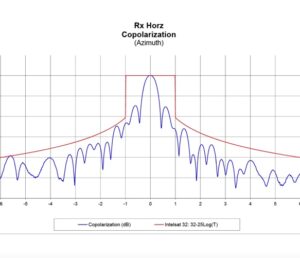When we look at receive antenna patterns sidelobes, they tell us just as much about the overall health of an antenna system as the main beam itself. These sidelobes — the smaller peaks of radiation outside the primary beam — directly impact gain, noise performance, and can even reveal issues with reflector shape or alignment.
What Receive Antenna Patterns Sidelobes Mean
Sidelobes aren’t just a measurement artifact. When excursions are observed in receive antenna patterns sidelobes, it typically points to two important issues:
-
Reflector Shape and Surface Accuracy
-
Asymmetries in sidelobe balance or null depths often signal reflector surface distortions or subreflector misalignment.
-
A precise reflector will naturally suppress sidelobes, while imperfections allow them to rise.
-
-
Impact on System Performance
-
Loss of Gain: Energy that shows up in receive antenna patterns sidelobes is energy not focused into the main beam, reducing overall gain.
-
Excess Noise Pickup: Antennas collect unwanted signals and background noise through sidelobes, degrading system noise temperature and performance.
-
Optimizing Subreflectors for Antenna Performance
One of the most effective tools for improving sidelobe performance is subreflector optimization. By carefully adjusting the subreflector in translation and tilt, engineers can:
-
Balance the first sidelobes, keeping them equal in level and properly suppressed.
-
Monitor the first null depths, which indicate alignment with the reflector’s phase center.
-
Confirm the antenna is properly focused at both the receive and transmit phase centers.
At Parity, even when providing Preventive Maintenance field operations or validating RF performance, we verify subreflector position and optimize if needed. This ensures sidelobe performance is not just acceptable, but refined to deliver maximum gain and minimum noise pickup.
Why Receive Antenna Patterns Sidelobes Matter
For SATCOM ground stations and other precision applications, sidelobe performance isn’t just about passing a specification. It reflects the true condition of the reflector system, the precision of installation, and the long-term reliability of the link.
In short: receive antenna patterns sidelobes tell a story. By reading that story through careful pattern measurements and subreflector optimization, we ensure the antenna is operating at its full potential.


